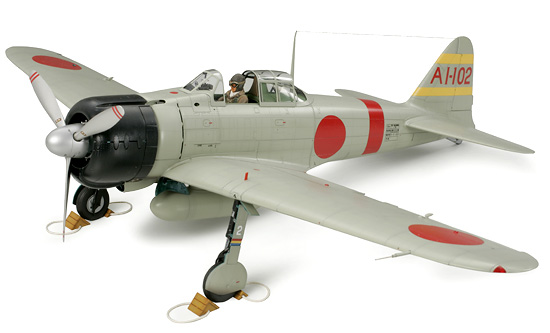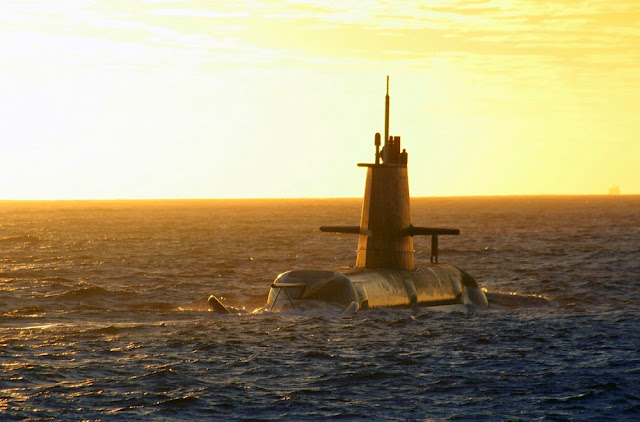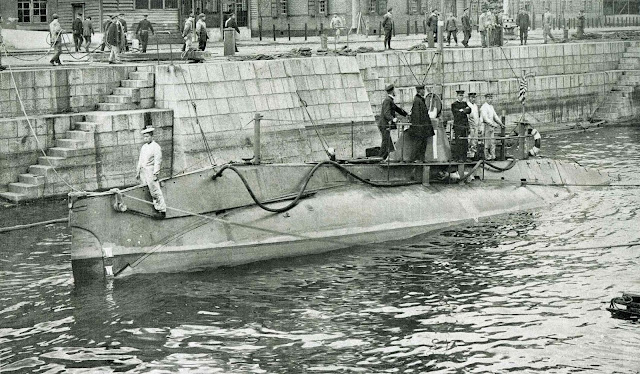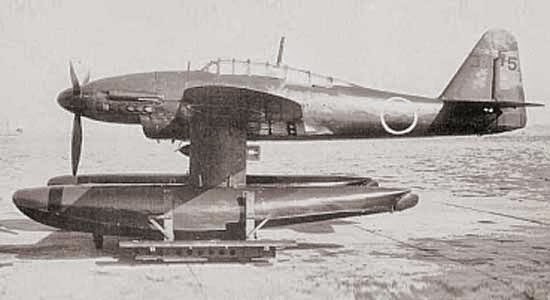 |
| The Kawanishi H8K2 Model 12 Type 2 Flying Boat Allied code name Emily at Kanoya Air Base Museum. Source Wikipedia |
Most of us are familiar with combat aircrafts of World War II like the North American P-51 Mustang, the Supermarine Spitfire, the Messerschmitt Me-109, the Boeing B-29 Superfortress, the Avro Lancaster and maybe even the Consolidated PBY Catalina. But how about the Kawanishi H8K? I must confess I did not know of its existence until my recent visit to the naval aviation museum of Kanoya Air Base in Kagoshima, Japan.
 |
| The Kawanishi H8K2 Emily Type 2 Flying Boat. Source : Hasegawa Model Co. |
Kawanishi H8K
The Kawanishi H8K was a large 4-engine maritime aircraft used by the Imperial Japanese Navy Air Service ( IJNAS ) during WWII. It was commonly known as the Nishiki Hikotei ( 二式飛行艇 ) or Type 2 Flying Boat and its allied reporting name was " Emily ".
It was manufactured by the Kawanishi Aircraft Company ( 川西航空機 ) which was well known for its various seaplanes. Its chief designer was Kikuhara Shizuo ( 菊原静男 ).
The H8K was fast, has a large lifting capacity and very long range. It was robustly built and also has a very comprehensive set of defensive armaments. It saw service between 1941 to 1945 and was deployed in maritime patrol, bombing, reconnaisence and transport missions. Many including the aviation author René Francillon considered it to be one of the most outstanding maritime combat aircraft of WWII. A total of 167 H8K of different variants were built during the War but as of today only one has survivied and it is now displayed at the Kanoya Air Base Museum ( 鹿屋航空基地史料館 ).
 |
| Kawanishi H8K2 Model 12 Emily at Kanoya Air Base Museum. Source : Wikipedia |
Emily of Kanoya
The Kanoya Air Base Museum is one of three museums managed by the Japan Maritime Self Defense Force ( JMSDF ) and is dedicated to the history of naval aviation. Kanoya Air Base itself was a major IJN airfield during WWII and was extensively involved with conducting Kamikaze suicide attacks during the closing years of the War. Today it is the headquarters of JMSDF's Fleet Air Wing 1 with its P-3C Orion anti-submarine unit, search and rescue unit and 2 helicopter training units.
The museum has a large collection of legacy Cold War era naval aircrafts and helicopters previously in service with the JMSDF but also a restored Mitsubishi A6M5 Model 52c Zero fighter and as mentioned the H8K Type 2 flying boat.
There is no doubt whatsoever that the crown jewel of Kanoya has to be the one and only Kawanishi H8K left in the world so much so that the museum has made the flying boat the official museum mascot and has created a caricature in the form of a flying whale called Nishiki Don.
| Nishiki Don : the whale mascot of Kanoya Air Base Museum |
But how did this Emily, a H8K2 Model 12, end up at Kanoya? I discovered that there was a convoluted story behind the preservation of this Type 2 flying boat. One that began with long trip across the Pacific to the United States, an extended period of storage, a subsequent reunion with its designer and a long drawn campaign to bring it back to Japan.
 |
| Some significant land marks in the history of the last Emily. |
Survivor
It was said that when Japan surrendered on 15th Aug 1945, there were only four surviving Kawanishi H8Ks in all of Japan. Three of them were air worthy and they were located at the Nanao Auxillary Seaplane Station in Ishikawa Prefecture. However, one crashed and sunk off the coast of Shimane in transit to Takuma Naval Air Station located in Kagawa Prefecture within the Seto Inland Sea. Takuma was then one of the major seaplane base hosting the Type 2 flying boats.
| Kawanishi H8K2 Emily Flying Boat beached at a damaged installation in Japan circa late summer 1945. Source : Naval History and Heritage Command |
By 22nd Aug 1945, all three surviving H8Ks were at Takuma. An unverified source mentioned the US commander only wanted to keep one aircraft for tests and evaluation so the other two were eventually destroyed. To maintain the H8K in flyable condition was a tall order as demobilization was on ongoing and the was just not enough manpower for the up keep of the huge plane. Somehow a seven man team of technicians was recruited from the Kure Naval Arsenal and they had the H8K fixed by October 1945. With a team of six flight crew, Lieutenant-Commander Hitsuji Tsuneo ( 日辻常雄 ) who was then commander Takuma Naval Air Group, successfully flight tested the Type 2 flying boat without any incidents. On 13th November 1945 Hitsuji and his team flew the H8K to Yokohama, tailed by a PBY Catalina. He noted that the journey took him about one and a half hours while the slower Catalina took slightly more than two hours. From Yokohama it was ferried to Naval Air Station ( NAS ) Whidbey Island, Washington, where she was found to be not air worthy. The Emily was then shipped via the Panama Canal to NAS Norfolk where the Overhaul and Repair Facility had the herculean task of overhauling and reassembling the aircraft without the benefit of blueprints, technical manuals and spare parts, starting December 1945.
The Emily had thus far accumulated 15000 flight hours and upon the completion of her refurbishment, she was flight tested on 23rd May 1946 during which she was flown from Hampton Roads to NAS Patuxent River less than 100 miles away. Two engines had malfunctioned during the flight while a third stalled shortly after landing but none of the American aviators were injured. It seemed the Emily would never fly again. At NAS Patuxent River, hydrodynamics tests began on 22nd Aug 1946. By 30th Jan 1947, the test and evaluation program was terminated. The aircraft was taken apart, wrapped up in protective coating, crated up and shipped back to NAS Norfolk where she was mothballed under the responsibility of the Naval Air Rework Facility.
The Hampton Roads Naval Museum blog has an excellent collection photographs and information of the Emily while in the custody of the Americans.
The Japanese Internet Aviation Magazine Contrail ( Hikoki Gumo ) 航空雑誌ヒコーキ雲 has large collection of photographs and information of the Emily after her return to Japan.
 |
| Hitsuji Tsuneo wrote the book The Last Flying Boat ( 最後の飛行艇 ) published by Kojinsha ( 光人社 ) |
Post War Restructuring
Meanwhile aircraft manufacturing was completely banned beginning from December 1945 during the Allied Occupation and the Nishikawa Aircraft Company tried to transform its business model to cater to a completely different peacetime market. By 1946 it was churning out daily commodities to help alleviate shortages in goods and food. It also made motorcycles and three wheeled light trucks. It was renamed Meiwa Industries in July 1947. In 1949, in compliance with some corporate restructuring law, the company was split and renamed Shin Meiwa Industry Company. Its automotive arm Meiwa Automotive Industries was divested to a certain car company known as Hatsudori Seizo Co, which in 1951 would be renamed Daihatsu Motor Co.
Rid of the automotive arm and retaining its core aircraft manufacturing and overhaul business, Shin Meiwa ( which means New Meiwa ) soldiered on with heavy machinery and aircraft component manufacturing and eventually saw a change of fortune with the end of the Allied Occupation and the lifting of the aircraft manufacturing ban in 1952. In 1953 it had started to research on a new generation of amphibious aircraft with greater sea-worthiness based on an initial idea by Kikuhara Shizuo, the chief designer of the H8K. By 1957 the research team had successfully overcome two technological hurdles by inventing a wave suppressor and a high lift device which allowed for low take-off and landing speeds, thus paving the way to developing a short take-off and landing seaplane.
However, Shin Meiwa would soon face a new challenge in securing the necessary funds to develop the amphibious plane and the company started pitching the seaplane as the most effective means of anti-submarine patrolling with the hope that the Japanese government would start placing orders. Its PR efforts eventually drew the attention of the US Navy who would then invite Kikuhara to Washington D.C. in 1959.
Reunion and Failed Repatriation
During his one month tour of the United States, Kikuhara Shizuo had the opportunity to visit many American research facilities including those at NASA. He observed experiments conducted in large scale water troughs and various wind tunnels and spoke with researchers over technical issues. He had also met with high ranking US naval officers and managed to obtain the promise of total support in terms of technology and materials so long as the JMSDF would make an official request. He promptly asked to be given one the US Navy's seaplanes so that he could test the new technology on an experimental plane before further development. His request was eventually accepted and a Grumman HU-16 Albatross was given to the Japanese who reverse engineered and reassembled it to build the UF-XS testbed seaplane. Shin Meiwa would then go on to produce the PS-1 anti-submarine patrol plane and later its SAR variant the US-1.
Kikuhara also toured NAS Norfolk during his working trip to Washington D.C. where he found the mothballed Emily placed in the open. In an article he later wrote for the Japanese magazine Koukuu Jyouhou ( 航空情報 ) or Aviation News, he described the plane as being preserved in fairly good condition. It was wrapped in a special rubber coating like a cocoon and the entrances were sealed. Some kind of air conditioner blew dry air into the interior of the fuselage and kept the humidity level at 28% on the day of the visit and generally less than 30% during the more than 10 years of preservation. He negotiated for its return but was unsuccessful this time as the US had decided on its permanent preservation on American soil.
A year after Kikuhara's visit, in September 1960, the Emily would suffered extensive damage when Hurricane Donna struck and ripped it off its moorings and tipped it over to its starboard side breaking loose engine number 4. Donna was the strongest Atlantic hurricane of 1960 and the strongest to hit the eastern seaboard since 1935.
 |
| Photo of Kikuhara Shizuo in an article he wrote in Koukuu Jyouhou ( Aviation News ) magazine on his American trip Source Internet Avaition Magazine Hikoki Gumo ( 航空雑誌ヒコーキ雲 ) |
 |
| The H8K2 Emily at the Tokyo Maritime Science Museum |
Return To Japan
In the following years, the campaign for the return of the H8K to Japan continued, lead by a prominent psychiatrist Dr Saito Shigeta ( 斎藤茂太 ) ( 1917 - 2006 ) who was also an aviation enthusiast and an essayist. The movement eventually bore fruit in 1978 when the Americans decided to do away with the aircraft due to cost cutting constrains. Of the various organizations and individuals that offered to get the Emily off the hands of the USN, the Tokyo Museum of Maritime Science ( 船の科学館 fune no kagakukan ) was selected as it fulfilled the transfer criteria : it was a non-profit organization and it had the funds for the relocation. The transfer was subsequently approved by Congress and a ceremony was held on 23rd Apr 1979 to mark the event. The Emily departed Norfolk on 31st May 1979 and was put on a cargo ship the New Jersey which arrived at the Oi Container Terminal in Tokyo on 13th July. One week later, the H8K was transferred to the Tokyo Museum of Maritime Science and Lt-Commander Hitsuji was in attendance at the receiving ceremony. Restoration works commenced on 20th Feb 1980. The restored H8K was unveiled to the public on 27th March 1982, becoming part of the outdoor exhibit of the Maritime Science Museum until 2004 when it was finally relocated to Kanoya Air Base Museum.
 |
| Dr Saito Shigeta was instrumental in the eventual return of the H8K to Japan |
The reasons for the transfer to Kanoya was not apparent to me but it may have something to do with the death of the Museum of Maritime Science's founding president Sasakawa Ryouichi ( 笹川良一 ) in 1995 and perhaps to the lack of funding from his Sasakawa Foundation ( later Nippon Foundation ) thereafter. The museum has been effectively closed since 2011 with only a few ships still open to the public at its annex location. Sasakawa was a shady and controversial Japanese businessman with connections with the political elites and the underworld. He was once imprisoned as a class A war criminal from 1945 to 1948 but was subsequently released without facing charges. He made his fortunes supplying the Imperial Japanese Army in Manchuria from 1932 and post war through monopoly of the betting activities on motor boat racing, among other things.
 |
| The Emily displayed at the Maritime Science Museum whose main building takes the shape of a ship. This old image was dated Dec 1997 |
Aircraft Specifications H8K2 Model 12
Length : 28.13m
Width : 38.00m
Height : 9.15m
Wing Area : 160m²
Empty Weight : 18400kg
Gross Weight : 24500kg
Maximum Weight : 32500kg
Powerplant : 4 x Mitsubishi Kasei MK4Q Model 22 14 cylinder air-cooled radial piston each 1850hp
Max Speed : 453 km/h at 5000m altitude
Range : 7200km
Armament : 5 x 20mm Type 99 cannon
4 x 7.7mm Type 92 machine guns with another 3 in reserve
2 x 800kg torpedoes or
2000kg of bombs and depth charges
Radar : Mark VI Model 1 ASV radar.
Compliment : 10
Take-off Distance 295m
The photographs below from Hasegawa Model Co show the completed 1:72 scale model of the Nishikawa H8K2 Model 12 with decals exactly as the last Emily at Kanoya. The tail code T indicates this aircraft operated out of Takuma Naval Air Station. Earlier during the War the IJNAS used the hiragana たく ( taku ) instead on aircrafts from Takuma.
Seaplane Tender Akitsushima
When writing about the H8K, it is impossible to omit the mention of the seaplane tender that maintain, resupply and repair the Type 2 flying boat in theatre. The IJNS Akitsushima ( 秋津洲 ) was a seaplane tender specifically built to handle the large seaplanes of the IJN. Its most unique feature was the 35 ton crane near the stern that was capable of lifting the 31 ton H8K. The 5000 ton ship can carry 689 tons of aviation fuel, 36 torpedoes and almost 62 tons of bombs ( 100 x 60kg, 100 x 250kg, 15 x 500kg, 30 x 800kg ). It can accommodate the H8K on its deck but only when in anchorage since the wingspan of 38m was much greater than the beam of the ship at 15.8m. It was just not possible with the rolling motion when the ship was underway.
 |
| IJNS Akitsushima with its fancy camouflage. Source Wikipaedia |
 |
| IJNS Akitsushima with its fancy camouflage 1:700 scale. Source : Aoshima Model Co |
 |
| IJNS Akitsushima with H8K on deck. Source Aoshima Model Co. |
 |
| Erroneous depiction : Akitsushima underway with Emily onboard! Not possible! Source : Aoshima Model Co |
Preserving Emily
As usual, in the immediate aftermath of many conflicts, the last thing in the minds of either the victor or the vanquished would be to save some war relic for future historical and heritage purposes. There were just too many other urgent and pressing issues to settle, like the demobilization and repatriation of veterans and the resettlement of refugees, food shortages, re-establishing the healthcare system, nation rebuilding etc.
The Kawanishi H8K was a brilliant piece of aero-nautical engineering representing the best of Japanese wartime aircraft design and manufacturing capabilities. It was unfortunate that only one would survived the War and would be taken away from Japan, rightfully by the Americans as the victors.
To the credit of the Americans, they did not simply discard or scrap the H8K after toying with it but instead mothballed it. Since they were short on funds, the USN could have donated the Emily to the National Air Museum ( subsequently renamed Smithsonian Air and Space Museum ) whom I am sure would be very glad to have her, especially knowing that this was the last H8K in the world. However, should that have happened, the Emily would become just another aircraft among the thousands of equally rare and precious aircrafts in the Smithsonian collection.
It would have been more meaningful for the Emily to be returned to Japan, to be treasured and to be seen by the generations of Japanese who has never experienced the horrors of war. Fortunately the perseverance of Saito Shigeta and his follow countrymen eventually saw the Emily being returned her country of origin. I cannot imagine what would have gone through the mind of chief designer Kikuhara Shizuo when he found his Emily languishing in Norfolk and the anguish of not being able to successfully negotiate for her return. It was after all his creation. After 33 years of solitude in America, it was like a fairy tale ending that the Emily was received by her last Japanese pilot commander Hitsuji Tsuneo on her return to Japan.
The Emily has out-lived her designers, builders and the airmen and technicians that maintained and flew her. At Kanoya, she will continue to inspire future generations of aeronautical engineers, airmen and educate, Japanese and foreign visitors alike, about Japan's dark wartime history.
Foot Note
A flying boat is a fixed-wing seaplane with a hull that allows landing on water. Its purpose-designed fuselage gives the aircraft buoyancy and allows it to float on the water surface. It usually does not have any sort of landing gear to allow operations on land. The wheels on the H8K, known as beaching wheels, are not designed to withstand the impact of landing on an airstrip.
A floatplane in contrast uses floats beneath the fuselage to provide buoyancy. The fuselage is lifted above the water surface by struts and supports.
An amphibious plane is a seaplane, either flying boat or floatplane, that is also fitted with landing gear that allow for take-off and landing on land
Shin Meiwa Industries has been rebranded ShinMaywa Industries since 1992 in an attempt to make the company name more pronounceable for foreigners. It currently produces the US-2 SAR amphibian, an evolved version of the US-1.








































.jpg)



_arrives_at_Joint_Base_Pearl_Harbor-Hickam_for_a_scheduled_port_visit%2C_-6_Feb__2013_(YP255-023).jpg)








_VLS_doors_open.jpg)